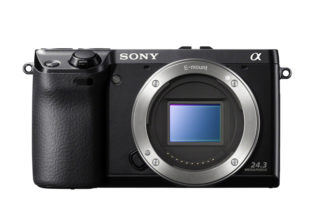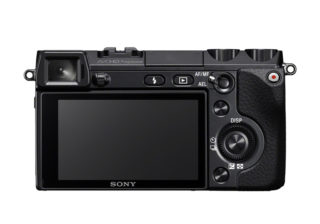Mirrorless Compacts Finally Starting to find their Place?
Let me just get this out of the way. I don’t like these new-fangled mirror-less compact camera. I find them to be a solution in search of a problem, and am quite willing to talk anybody’s ear off about how and why there is almost always a better, if sometimes not actually available, solution to someone’s camera needs.
Interchangeable lenses add bulk to the overall package compared to a fixed lens design, electronic viewfinders, usually are small, and suck, and as far as I’m concerned, holding a camera having to hold a camera out in front of you while you take a picture is fundamentally bad in a number of ways.
But this isn’t about why these mirror-less interchangeable lens cameras (MILC for now on) are bad, quite the opposite, now after some 3 or 4 years of serious development the players are finally starting to put things together in a package that isn’t utterly brain dead.
The first key point is to recognize that not everybody who’s buying a MILC isn’t a casual photographer who things that a more expensive camera is going to make them better. Serious photographers are buying and using these things. Understanding that is a huge realization, in my opinion, as the design elements that are important to be effective as a serious photographer are not the same ones that are necessary to get half decent family snapshots.
Enter the Sony NEX-7
 The NEX-7 has everything I’d look for in a serious photographer’s MILC. There are physical dials for all major controls, exposure compensation, aperture, shutter speed, and ISO depending on modes. There’s a hot shoe, though it’s the silly Minolta/Sony one not the standard one. There’s even a built in viewfinder, though it’s electronic.
The NEX-7 has everything I’d look for in a serious photographer’s MILC. There are physical dials for all major controls, exposure compensation, aperture, shutter speed, and ISO depending on modes. There’s a hot shoe, though it’s the silly Minolta/Sony one not the standard one. There’s even a built in viewfinder, though it’s electronic.
In my humble opinion, the NEX-7 says one thing, Sony finally figured out that there’s a market for these MILCs that cater to serious photographers.
Of course on the same note, the NEX-7 brings with it a 24MP sensor, that I think reeks of megapixel war excessiveness. Don’t get me wrong, I’m all for more resolution as long as the rest of the image quality factors increase along with it. Unfortunately, that’s not something that has historically happened when a company adds 70% more pixels to a sensor. At best, the overall image quality stays the same; at worst, everything slips backwards a little.
 As it stands, the camera was just announced and none of the usual sources have quantitative reviews of the sensor performance, so we wait and hope.
As it stands, the camera was just announced and none of the usual sources have quantitative reviews of the sensor performance, so we wait and hope.
What remains to be see though, is the performance of Sony’s new 24 MP sensor. History tells me that adding 50-70% more pixels in a single generation results in mediocre sensor when it comes to image quality. Sure there’s more pixels, but they don’t record as much dynamic range and are noisier resulting in an image that’s not much better than the lower resolution predecessor. We saw this with Canon’s 50D, and 1D mark 4. It remains to be seen whether Sony can pull a rabbit out of their hat on this sensor and improve the IQ as well as the resolution, or if the increase in resolution isn’t just about throwing big numbers on the box.
For more images and a hands on preview check out DP Review’s first look.
Lumix G X Vario PZ 14-42mm f/3.5-5.6 OIS Pancake
Like I said at the start of this article, the biggest problem I have with most of these CLICs is that while th camera may be compact, the lenses that go on them tend to follow more traditional designs. As a result, the lenses for these so-called compact cameras often aren’t any smaller than their SLR destined cousins. Olympus at least recognized the need to collapse the lenses when they designed their 14-42 zoom.
The compact interchangeable lens camera is the perfect place to focus on pancake and other compact primes. This isn’t the place for bulky zooms that negate the advantage of having a small camera. To that end, Panasonic has done something that’ really impresses me with the 14-42mm OIS pancake. They’ve put a zoom in a pancake lens. All told, the Vario G 14-42 isn’t any bigger than Olympus’s M.Zukio 17mm f/2.8 or Panasonic’s 14mm f/2.5 or 20mm f/1.7 pancakes. Only it’s a zoom.
The real question will be whether the image quality is decent, and if it is, whether anybody else building CLIC systems will step up and start releasing truly compact lenses to go with their already compact cameras.
For a market segment that I’ve always felt is a solution in search of a problem, the compact mirror-less interchangeable lens cameras are really starting to come into their own as a platform worth looking at as a serious photographer. They still aren’t quite there yet, but they are definitely moving in a positive direction.
Sony NEX-7 Images courtesy of Sony Electronics Inc.